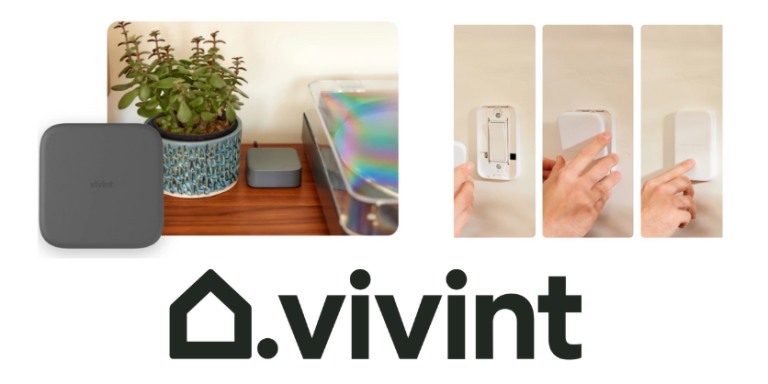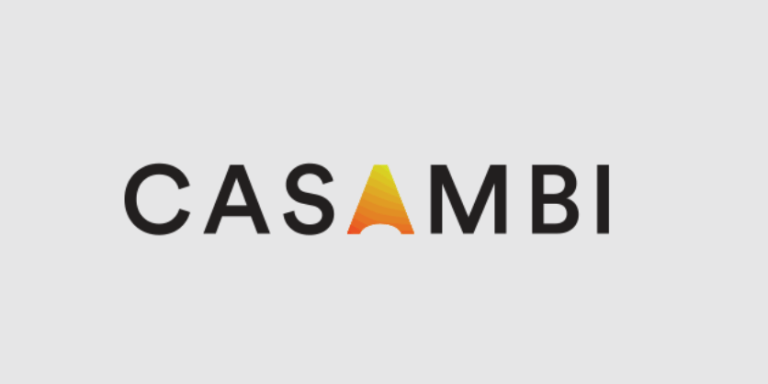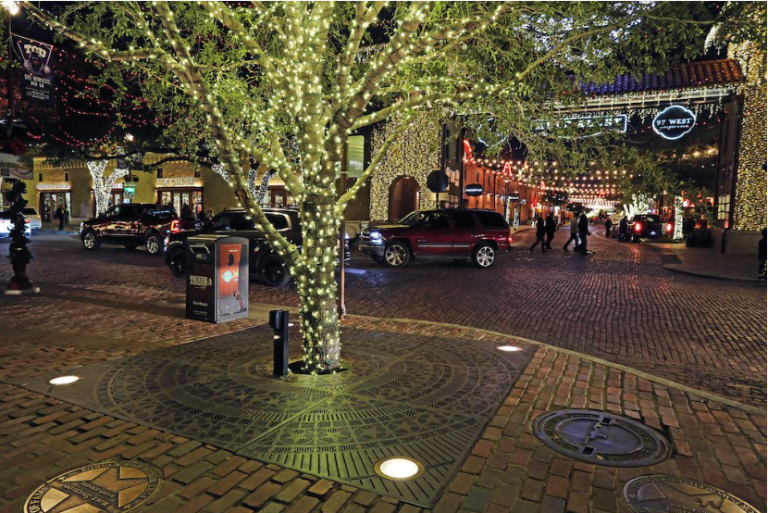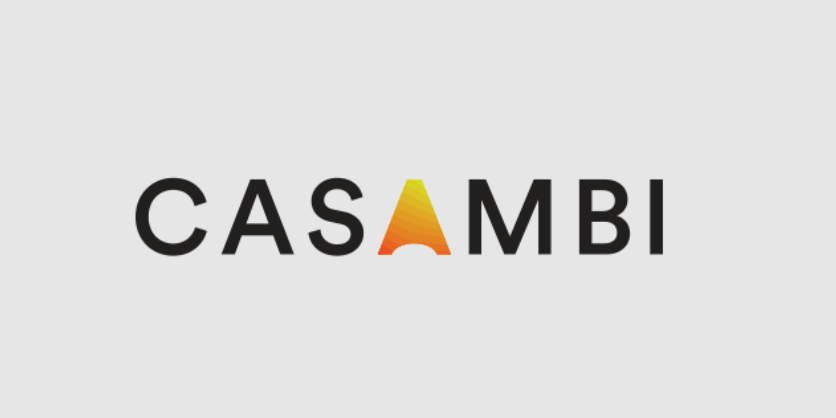DarkSky Approved: Wildlife-Friendly Lighting Standards and Recommendations

By: DMF Lighting
Artificial light at night (ALAN) refers to the use of electric light sources in outdoor spaces. ALAN’s use has proliferated in the last half a century and grown exponentially as cities and infrastructure continue to grow, and particularly as the cost and energy usage of lighting fixtures has come down. ALAN is used for all sorts of applications, including roadways, landscape lighting and architecture, and while electric light in the nighttime environment provides many conveniences, including providing safety, it has also created several problems, especially for wildlife that has lived under only natural light at night (namely moonlight and starlight).
The introduction of ALAN can cause a wide range of problems for wildlife, including disrupting sleep cycles, displacing them from their natural habitats, disrupting migration patterns, disrupting breeding rituals and even altering hormone production. Beyond these negative impacts on wildlife, research shows that human beings can suffer from many of the same issues from high levels of exposure to ALAN as well. The irresponsible use of ALAN can decrease safety and visual comfort (notably in the case of unshielded/high glare fixtures); disturb production of hormones; and even increase the risks of serious disease and mental health disorders.
With the goal of combatting some of these very serious effects of irresponsible ALAN, wildlife-friendly lighting standards have been developed to advocate for the use of specific lighting fixtures, design principles and lighting control methods to ensure that ALAN is as minimally disruptive to wildlife and their natural environment.
Wildlife Lighting Standards Recommendations
There are several organizations that establish and promote wildlife-friendly lighting standards and one of the most prominent is DarkSky International, an independent organization offering certification and educational resources.
The Florida Fish and Wildlife Conservation Commission (FWC) and the U.S. Fish and Wildlife Service (USFWS) are government agencies that provide guidelines and resources for wildlife lighting and are the most referenced for sea turtles (turtle-friendly lighting) and bird-friendly lighting, as well as the development of the Wildlife Lighting Certification Program.
This bulletin will explore lighting standards and recommendations including some of the similarities as well as the specificities.
DarkSky International

DarkSky International is a global network of advocates, delegates and volunteers that promote the responsible use of ALAN. Most notably, DarkSky, in conjunction with the Illuminating Engineering Society (IES), established the Five Principles for Responsible Outdoor Lighting, which guide lighting professionals when designing exterior lighting.
Aside from the five principles, DarkSky has a few other core functions, including certification and approval programs, as well as education and outreach. The DarkSky certification program allows for geographical areas to be DarkSky certified, denoting that area meets certain levels of lighting requirements that preserve the integrity of the night sky. These range from parks, sanctuaries and urban environments. The DarkSky Approved program provides third-party approval for products, lighting designs and projects, ensuring that they meet necessary requirements that abide by the DarkSky principles. Finally, DarkSky also works as a resource to aid in crafting ordinances and legislation for municipalities to help combat the growing problem of light pollution.
DarkSky’s Five Lighting Principles for Responsible Outdoor
Lighting
DarkSky’s five principles exist to guide lighting professionals when designing exterior lighting. These simple, yet impactful, principles are very intuitive and relatively easy to implement and yet they can have an enormous impact when applied correctly. The five principles are outlined below:

The Five Lighting Principles for Responsible Outdoor Lighting all work in conjunction to reduce light pollution and maintain dark skies and healthy habitats for wildlife. It is important to note that many of these guidelines, such as the “Low Level” and “Targeted” guidelines are somewhat subjective. When designing outdoor lighting, some testing and mockups in the field may be useful to determine what is “Low Level,” especially in the full context of the project site. For example, a 4-watt luminaire in the middle of a city park may be appropriately bright, whereas the same fixture in a rural residence may be far too bright.
The use of lighting controls is another key principle that can go a long way in reducing ALAN and its impacts. Motion sensors and timers help to further cut down on light when the lighting is not in use, such as when no one is present. Sensors and timers also help to increase energy efficiency.
DarkSky Approved Program
As previously mentioned, DarkSky maintains the DarkSky Approved program, which provides a third party approval program for luminaires that are designed to meet a specific set of criteria, all of which are aimed at meeting the Five Lighting Principles for Responsible Outdoor Lighting. When searching for luminaires for an outdoor lighting need, the DarkSky Approved seal can help guide the fixture selection for projects that need to meet any DarkSky requirements, be it for project design or to meet local ordinances.
The DarkSky Approved luminaires program has four main categories of fixtures: Residential, Commercial, Pedestrian Comfort, and Wildlife Tuned. These categories exist mainly to assist specifiers in finding the correct fixture in the DarkSky Database. Note that a single fixture may be listed across multiple categories, however each category also has its own specific requirements that do apply(1). When selecting a luminaire that needs to meet DarkSky requirements, look for the DarkSky Approved seal on the manufacturers’ specification sheet.

In general, DarkSky Approved luminaires meet the following requirements:
- Output – Depending on category, luminaires must not exceed a specific lumen output, ranging between 1,000 to 10,000 lumens, with the exception to commercial luminaires, which are not limited.
- Uplight/High Angle Light – Luminaires are limited to a very small percentage of uplight output (above 180°) and small percentage of high angle light (60° to 90°) zones.
- For this reason, adjustable fixtures that allow for upward tilt are not permitted.
- Correlated Color Temperature (CCT) – All fixtures must be 3000K in CCT or lower.
- Fixtures with selectable CCTs must not have an option higher than 3000K.
- Dimming – Fixtures must be dimmable to 10% or less of their full output.
- Safety – All products must meet qualified third-party electrical safety standards, such as UL, ETL, CE, etc.
Turtle-Safe Lighting

The Florida Fish and Wildlife Conservation Commission (FWC) is a government body in the state of Florida that manages fish and wildlife resources for their safety and the good of the community. One large part of the FWC’s programs is establishing turtle-safe lighting practices.
In the early 1990s, Floridians started to become sensitive to the negative impacts that humans and artificial light was having on native sea turtle populations that live and breed along the coastal regions of the state. During mating season, sea turtles lay their eggs on beaches along the coast of Florida. As soon as those hatchlings break out of their eggs, they have one mission – to make it back into the water. Turtle populations have evolved to navigate using the bright, high-blue spectrum moonlight, which appears most brightly along the horizon of the water. This bright source of light is their guiding way back to the ocean.
The problem being encountered is that traditional electric light, even if in the warmer range of color temperatures, still contains a high percentage of blue light, and its increasing brightness was confusing turtle populations and leading to exceedingly high numbers of deaths of baby hatchlings. After many years of research, FWC developed turtle-safe lighting guidelines, as well as other programs to safeguard these native turtle populations.
Turtle-safe lighting follows some similar principles to DarkSky’s five principles and can be summarized by the popular tagline, “Keep it Long, Keep it Low, Keep it Shielded.” In more detail, these principles mean:
- Keep it Long – Use long wavelengths of light only. Light sources may only emit light at 560nm or higher. Wavelengths below this are not permitted. In layman’s terms, this translates to a deep amber or orange light, which is much less distracting to sea turtles.
- Keep it Low – Mount light sources as low as physically possible, keeping light directed most closely to where it is needed for use and safety.
- Keep it Shielded – Light fixtures should be shielded in a way such that sources are not visible from within the Coastal Construction Control Line(2), or essentially from where sea turtles are known to hatch.
Turtle-Safe Lighting Ordinances and Seasons
It is important to note that in Florida, while the FWC maintains standards for turtle-safe lighting, the enforcement of these standards is largely left to the local municipalities, although FWC may assist with inspections and refer violations for enforcement action. Additionally, not every coastal area of the state has an ordinance, and each municipality may differ slightly based their needs, including the specific season for which that ordinance is enforced.
According to a 2022 study(3) by The Sea Turtle Conservancy, 102 out of 113 municipalities had enacted ordinances, leaving a small fraction without. Most notably, Miami-Dade and Broward County had no ordinance in place, however certain city municipalities such as Miami Beach and Hollywood Beach did have an ordinance. For maps and listings of Sea Turtle Lighting Ordinances, please reference the FWC site(4).
The Florida Department of Environmental Protection established the CCCL to identify where sea turtles are likely to nest, among other things. This can help to inform project designers where turtle-safe lighting practices should be employed in the absence of any ordinance.
Also importantly, most turtle lighting ordinances apply only during the nesting season, which is usually May 1 through October 31. Typically, outside of these months, turtle-safe lighting is not required to be used and other lighting, such as decorative string lights and higher intensity fixtures may be on, however it is always best to check the local municipality. For example, in Hollywood, Florida, turtle nesting season starts two months earlier on March 1.
Beyond the three main principles for exterior lighting set forth by the FWC, local turtle-safe ordinances may have additional requirements that need to be met. Some of those include implementation of timers or motion sensors; requirements for illuminated signage; and tinting or obscuring windows to obscure interior lighting from the beach.
FWC Wildlife Lighting Certification Program
The FWC established a certification program to help identify fixtures that comply with the three core principles for turtle-safe lighting. FWC’s program, known as the Wildlife Lighting Certification Program, certifies fixtures based on the three principles, summarized below(5)
- The most paramount requirement is the long wavelength light source, which shall be absent of wavelengths below 560nm. These light sources must be naturally deficient of these wavelengths and not employ the use of filters, gels or lenses.
- Light sources must not emit any output higher than 90° above vertical (perpendicular to the ground).
- Keep it Low – FWC’s certification guidelines do not stipulate specific lumen or wattage output limit, and mounting height is incumbent on the designer/installer.
Specifiers can consult the FWC’s list of Wildlife Certified Lighting Products to help guide their decisions, however it is important to note that as of April 2025, the FWC Wildlife Lighting Certification Program is currently closed and not accepting submissions due to a large influx of submittals and current back log, so not all products that meet the requirements may be listed(6).
DarkSky Sea Turtle Sensitive Luminaires

DarkSky’s approval program maintains a specific category for Sea Turtle Sensitive Luminaires, which has guidelines very similar to the FWC’s program. The main areas of difference are:
- The luminaire total light output shall not exceed 4,000 lumens.
- High angle light shall be limited to a certain percentage (between 60° and 90° from vertical).
- Luminaires shall be dimmable to 10% or less of its full output rating.
Requirements for wavelength, zero uplight (above 90°) and shielding are all the same as with FWC Turtle Safe guidelines. For full details, please reference the DarkSky Approved Luminaires guidelines(7).
Bird-Friendly Lighting Standards
Bird populations around the world are another group that is particularly susceptible to the negative impacts of the irresponsible use of ALAN. Eighty percent of North American bird populations migrate overnight, historically under only moon and starlight. The navigational and orienting mechanisms used by birds are still not fully known, but it is largely understood that they rely on magnetoreception, or the ability to detect the magnetic poles of the earth. More recent studies have shown that lighting conditions can alter this sense and disorient birds(8). It has been found that unnaturally high levels of blue spectrum light can impair bird magnetoreception and cause them to be disoriented and fly in non-migratory directions.
Additionally, particularly in urban settings, high levels of blue spectrum light can cause these birds to become trapped in “bubbles” of artificial light, leading to collisions, exhaustion and even mass-mortality events. These problems are particularly worsened on foggy or low cloud ceiling nights, when birds are forced to fly lower than normal.
Solutions for Bird-Friendly Lighting
The standards and strategies set by DarkSky and the FWC sea turtle program are similar to bird-friendly lighting recommendations. First and foremost, turning off lighting when it is not critical to use can be the most effective solution to the problem, so evaluating which light sources are unnecessary can be the most effective tool. Birds are at the greatest risk during spring and fall migration seasons, and on particularly cloudy or foggy nights, so paying special attention between April through May and August through October and during those weather conditions can go a long way.
If birds do become entrapped in an area of bright light, turning lights off for 15 to 20 minutes can allow them to escape the disorienting light and resume their normal course of migration. If monitoring is not feasible, implementing automatic timers can be another strategy to create automatic breaks. And to further reduce light pollution from interiors, close blinds, shades or curtains at night, or use window tinting to cut down on light transmission.
Just as stated by DarkSky and FWC, eliminate light that faces up into the sky; avoid using unshielded fixtures; and keep light as low to the ground as possible. Finally, using warmer CCT fixtures (less than 3000K) or better yet, amber LED fixtures – utilized for turtlesafe lighting – dimmed as low as possible, will help further cut down on the chances of birds becoming
distracted and entrapped in artificial light.
For more information on bird-safe lighting and building practices, reference the USFWS’ bird-safe lighting practices(9).
Bird-Friendly Lighting Ordinances
Bird-friendly lighting ordinances are often grouped together with bird-friendly building ordinances. There are several things that architects and designers can do in terms of construction materials, glazing and lighting to create a safer built environment for birds to navigate. In the U.S., bird-friendly building ordinances are largely left to local municipalities, however one region of note is the County of Maui, which recently enacted stringent requirements for bird and wildlife-safe lighting. The bill states that outdoor lighting fixture must not emit more than 2% of light from the blue spectrum between 400nm
and 500nm(10). Additional provisions, such as no uplight and full fixture shielding are also included in the bill.
For more information on other ordinances in place, The Yale Bird-Friendly Building Initiative maintains a national database of those ordinances(11).
DMF’s Wildlife-Friendly Lighting Solutions

DMF offers a wide variety of fixtures that are DarkSky approved and turtle sensitive approved luminaires, for both recessed downlighting and cylinder applications. Note that approved fixtures are limited to certain configurations.
- DarkSky Approved
- DarkSky Approved luminaires cannot include decorative trims and must be 3000K CCT or lower.
- M Series Residential (4-inch aperture) and X Series recessed downlights both offer DarkSky Approved configurations.
- M Series and X Series Cylinders both have DarkSky Approved configurations. Cylinders must be downlight (direct only), without any uplight.
- Look for the DarkSky Approved seal on DMF specification sheets for approved fixtures.

- Dark Sky Approved Turtle Sensitive
- DMF turtle-friendly lighting fixtures come in 300 lumen output, specialty CRI and Turtle & Wildlife Friendly (TF) spectrum.
- M Series Residential and X Series Recessed downlights are both available in turtle sensitive configurations.
- M Series and X Series Cylinders are also available in TF configurations, in downlight configurations only.
- Note that DMF Turtle and Wildlife Friendly fixtures are not currently listed as FWC Certified but are designed within the required specifications and are certified DarkSky Approved Sea Turtle Sensitive.
Citations
- Full DarkSky Approved Luminaires program requirements
- Coastal Construction Control Line (CCCL) Website
- Turtle Conservancy Study
- FWC Sea Turtle Lighting Ordinances
- Full FWC Sea Turtle Lighting Guidelines
- Updates to the FWC Wildlife Lighting Certification Program
- DarkSky Approved Luminaires guidelines
- Frontiers in Zoology: Light-dependent magnetoreception in birds
- USFWS’ bird-safe lighting practices
- Maui County Code Relating to the Protecting Wildlife from Outdoor Lighting and Preserving Dark Skies
- Yale Bird-Friendly Building Initiative








